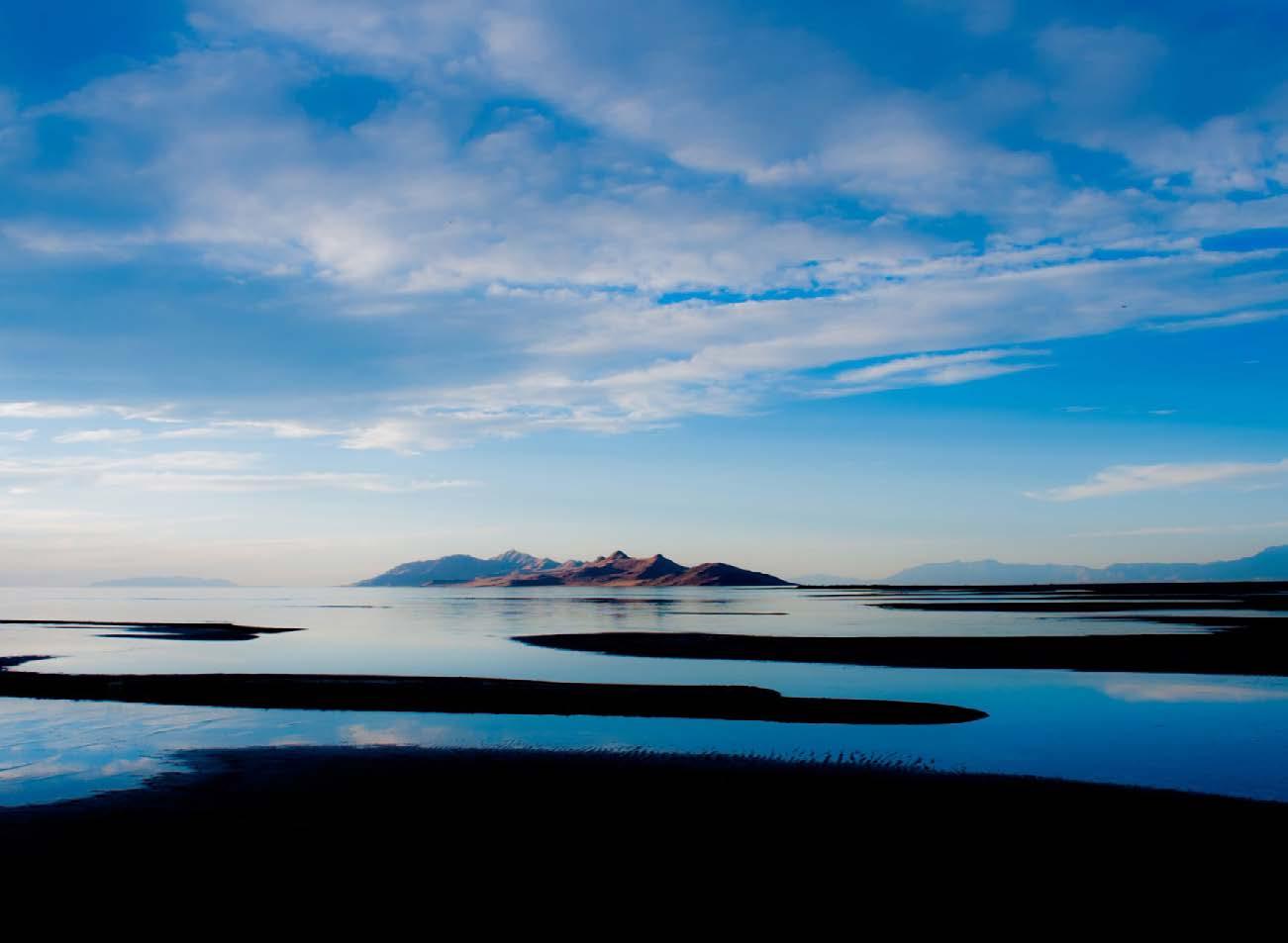
5 minute read
Saving the Great Salt Lake
Salt Lake Community College’s namesake, the Great Salt Lake, is currently one of the largest saltwater and terminal lakes in the world, but that could change. The lake has been drying up. Students, researchers, staff, and faculty at SLCC are working hard to bring awareness to that fact and helping to save the Great Salt Lake.
“The Great Salt Lake is at a tipping point,” says Maura Hahnenberger, PhD, an atmospheric scientist and a professor who teaches Meteorology and Earth Sciences at SLCC. “We hit a record low [water level] in 2021, and then we had another record low in 2022. Then we got this reprieve with a record setting winter that brought our lake levels up, but we’re still well below ideal.”
Hahnenberger should know. Her research is dedicated to saving the Great Salt Lake and deals with something she’s very familiar with—dust. Her work focuses on understanding the sources, transport, and impacts of dust. With drought conditions exposing much of the lake bed, dust has become a growing environmental and health concern. Hahnenberger has been collaborating with other researchers through a project called Dust across a Desert-Urban-Summit Transect (DUST^2), a National Science Foundation funded initiative studying the full dust cycle.
“This project started when a group of interested researchers came together in 2018 to start writing a proposal. All of us have been working on dust as an issue, separately looking at different parts of the dust problem. We had collaborated in the past because if you’re looking at one part of the dust issue, you have to bring in experts on other parts. But we’ve never had a cohesive project all together, where we’re bringing in what we call the whole dust cycle,” says Hahnenberger.
Hahnenberger’s interdisciplinary work provides valuable insights into Utah’s dust challenges. By modeling dust transport and collaborating with other experts, she is helping identify the most effective solutions to improve air quality and protect public health. She acknowledges that Utah is a naturally
dusty place but emphasizes the Great Salt Lake is a new source of dust. Researchers have examined the chemical composition of the dust and found elevated levels of arsenic that are well above EPA thresholds. While more research is needed on the potential health impacts, Hahnenberger says there is great concern this dust is close to Utah’s most populous areas.
Hahnenberger says that even though she doesn’t study ecosystems, “as a lover of the Great Salt Lake, I spend a big chuck of my time talking about the importance of the lake’s ecosystem.” In many of her lectures, she discusses the lake’s salinity and how hard it is for organisms like brine shrimp to live. Brine shrimp are the basis of the Great Salt Lake’s ecosystem, which supports millions of migratory birds.
“I feel like my concern for the Great Salt Lake actually has more to do with the ecosystem than it does with the dust because we’re already seeing the dust and potentially, we could have more. But the ecosystem, if it collapses, it could all be gone forever,” Hahnenberger says.
Collaborating to Tell Stories of the Great Salt Lake
Another group working to conserve the lake is the Great Salt Lake Collaborative (GSLC). The GSLC is comprised of members from SLCC’s Geosciences department and Community Writing Center (CWC), news media, and education and civic organizations.
The group’s goal is to inform and engage the public about the crisis facing the Great Salt Lake. One way this is done is through in-depth reporting on the lake’s decreasing water levels and possible solutions combined with a visually stunning “StoryMap” created by SLCC Geosciences professor Adam Dastrup. The StoryMap combines multimedia elements to explain the importance of wetlands. In recognition of this work, the Society of Professional Journalists awarded Dastrup a first place prize in their Top of the Rockies Multimedia Story contest.

The College’s CWC supports the collaborative by collecting the public’s stories and experiences with the lake and publishing them in Desecrate/Consecrate: A Great Salt Lake Community Anthology. The book, which debuted in October 2022, features over 200 submissions of writing, photography, and artwork that focus on people’s relationship with the Great Salt Lake as well as the lake’s ecosystem and cultural history.
“I suggested that the CWC’s capacity for being part of the collaboration would be helping storytellers tell their stories about the lake and creating a possible publication for it,” says Kati Lewis, director of the CWC. “We saw different communities coming together to share their memories, stories, fears, and hopes for the lake. Its survival and restoration are crucial to Utah.
The lake is our legacy, and the lake is our future. What happens to the lake will deeply impact our environment and culture.”
At 431 pages, the printed anthology became a physical manifestation of the collaborative’s goal to amplify diverse storytelling around the lake. The book features work viewed through scientific, historical, and personal lenses. Poems memorialize lost bird species or meditate on changing shorelines while photos capture industrial impacts alongside natural beauty.











